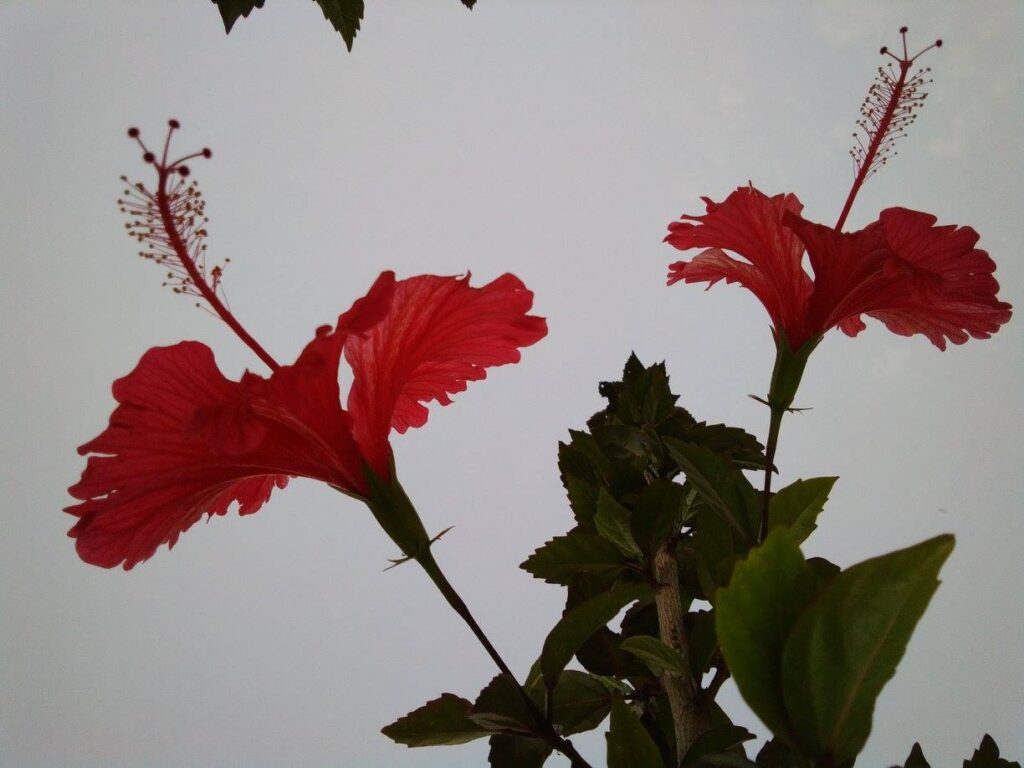
Hibiscus is a very common plant grown in different weather conditions. small branches are used for sampling. Hibiscus is a flowering plant that is native to tropical and subtropical regions around the world. It is known for its large, colorful flowers, which are often used in ornamental gardening. However, hibiscus is also used in food and beverage production, as well as traditional medicine. In cooking, hibiscus is used to add a tart and fruity flavor to dishes. It can be used fresh or dried, and is often used to make teas, jams, and syrups. Hibiscus tea is a popular beverage in many parts of the world, and is known for its bright red color and tangy flavor. It can be consumed hot or cold, and is often sweetened with honey or sugar. In traditional medicine, hibiscus has been used to treat a variety of ailments. It is believed to have antioxidant and anti-inflammatory properties, and is often used to lower blood pressure and cholesterol levels. Hibiscus has also been used to treat digestive issues and menstrual cramps. In addition to its medicinal uses, hibiscus is also used in cosmetic products. It is believed to have astringent properties, and is often used in skincare products to help tighten and firm the skin.
Varieties of Hibiscus
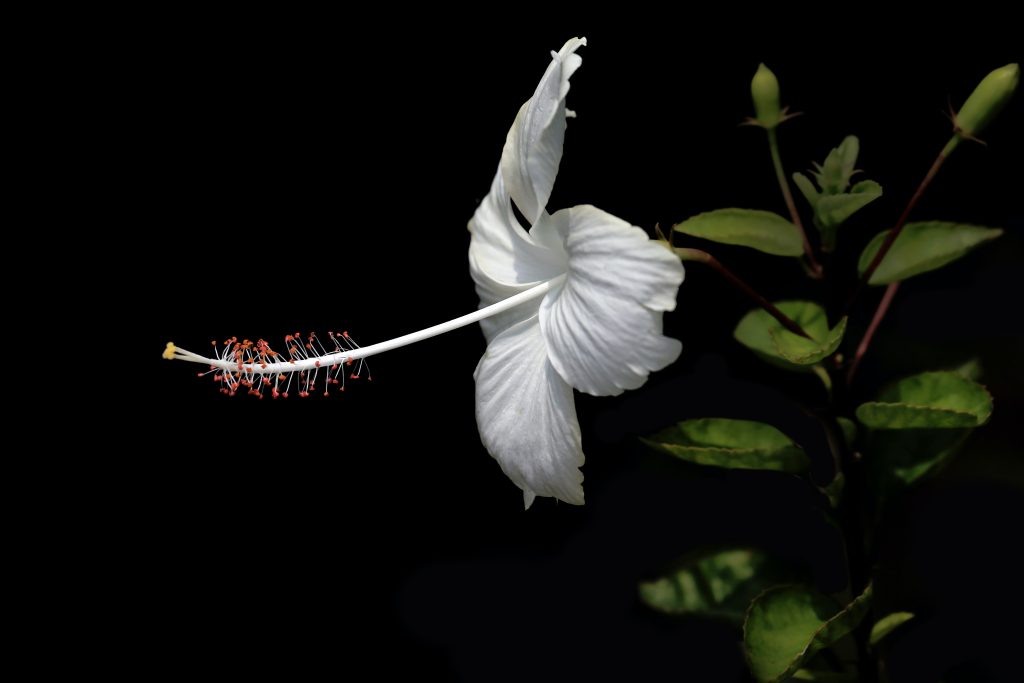
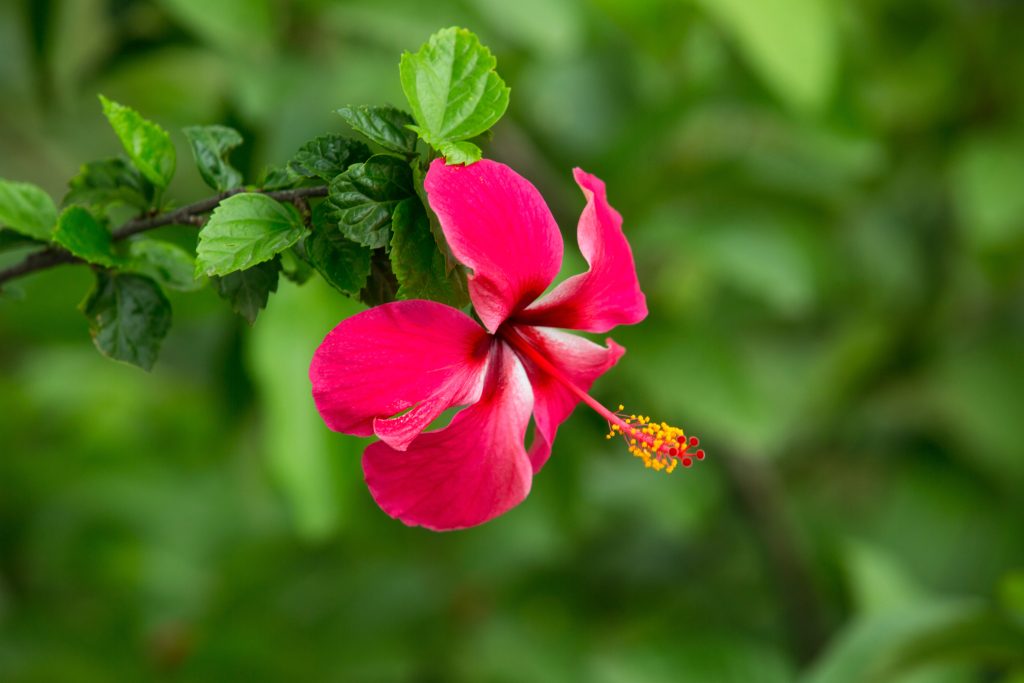
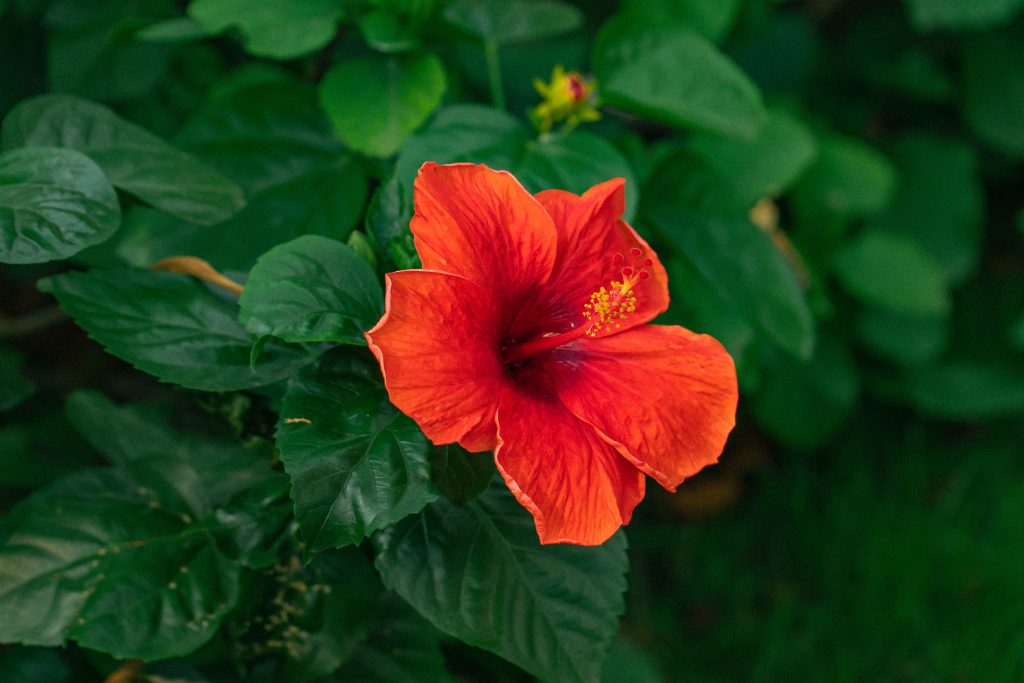

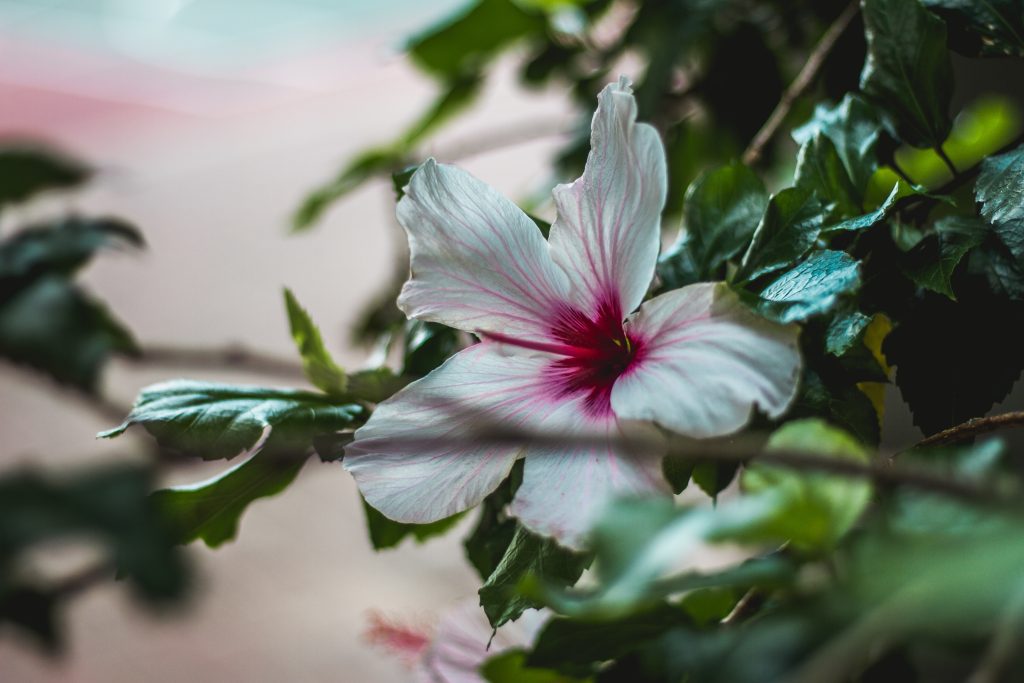
There are many varieties, different color, shape, etc. But the red color one looks very attractive, which is a flowering plant that belongs to the mallow family. Some of the most popular varieties include:
- Hibiscus rosa-sinensis: Also known as the Chinese hibiscus or Rose of China, this is one of the most common types of hibiscus. It has large, showy flowers in a variety of colors including red, pink, orange, yellow, and white.
- Hibiscus syriacus: This is commonly known as the rose of Sharon or shrub althea. It’s a deciduous shrub that produces large, trumpet-shaped flowers in shades of blue, purple, pink, and white.
- Hibiscus sabdariffa: Also known as roselle or sorrel, this variety is cultivated for its edible calyces, which are used to make a tangy, cranberry-flavored tea.
- Hibiscus mutabilis: This variety is also called the Confederate rose or cotton rose. It produces large, double flowers that change color as they mature, starting out white or pink and gradually turning deep red.
- Hibiscus schizopetalus: This variety is commonly called the fringed hibiscus or Japanese lantern. It has distinctive, pendulous flowers with narrow, twisted petals that resemble a lantern.
There are also numerous hybrids and cultivars that have been developed by horticulturists and breeders.
How to Grow Hibiscus?
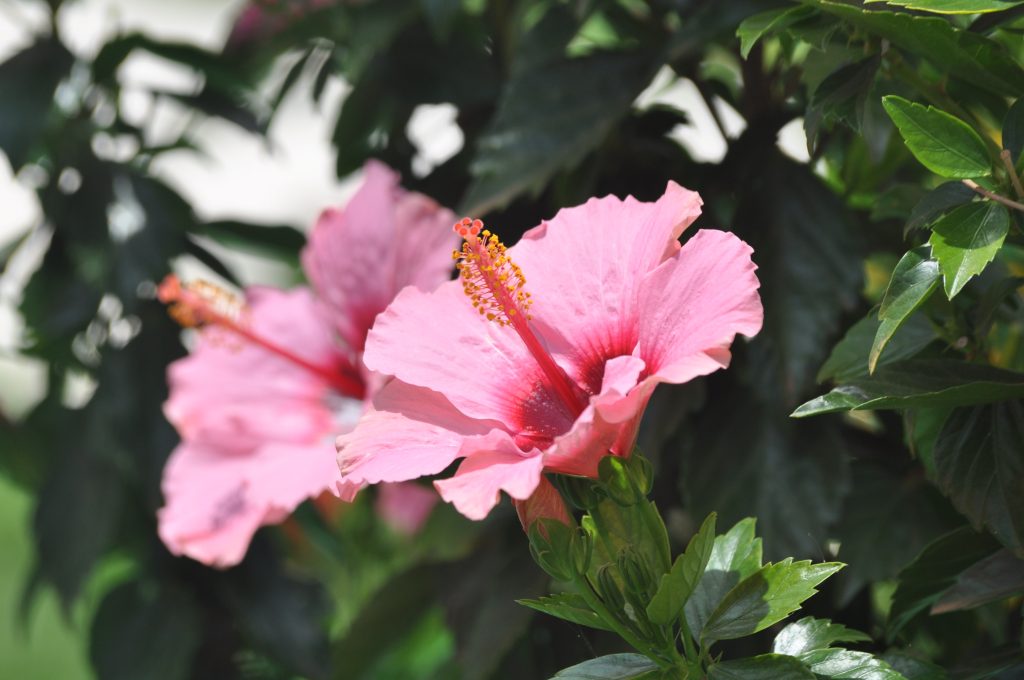
Hibiscus is a beautiful flowering plant that is easy to grow and care for. It is popular for its large, showy flowers that come in a variety of colors, including red, pink, white, and yellow. Here are the basic steps to grow hibiscus:
- Choose the right location: Hibiscus prefers full sun to partial shade and well-draining soil. Choose a location that receives at least 6 hours of direct sunlight per day.
- Prepare the soil: Amend the soil with compost or well-rotted manure to improve its nutrient content and drainage. Hibiscus prefers a slightly acidic soil with a pH between 6.0 and 7.0.
- Plant the hibiscus: Plant the hibiscus in a hole that is twice as wide as the root ball. Backfill the hole with soil and water well.
- Water regularly: Hibiscus needs regular watering, especially during the early stages of growth. Water deeply once a week or more often during hot weather.
- Fertilize: Hibiscus plants benefit from regular fertilization. Use a balanced fertilizer every 4-6 weeks during the growing season.
- Prune: Prune the hibiscus in late winter or early spring to remove any dead or damaged wood and promote new growth. Pinch back the tips of the branches in the spring and summer to encourage branching and more flowers.
- Control pests: Common pests that can damage hibiscus include aphids, spider mites, and whiteflies. Monitor your plants regularly and treat with appropriate insecticides if necessary.
- Enjoy the blooms: Hibiscus typically blooms from summer to fall. Enjoy the beautiful flowers and consider cutting them for use in floral arrangements or as garnishes.
By following these simple steps, you can successfully grow and enjoy your own hibiscus plant. With proper care, hibiscus can live for many years and provide you with beautiful blooms year after year.
